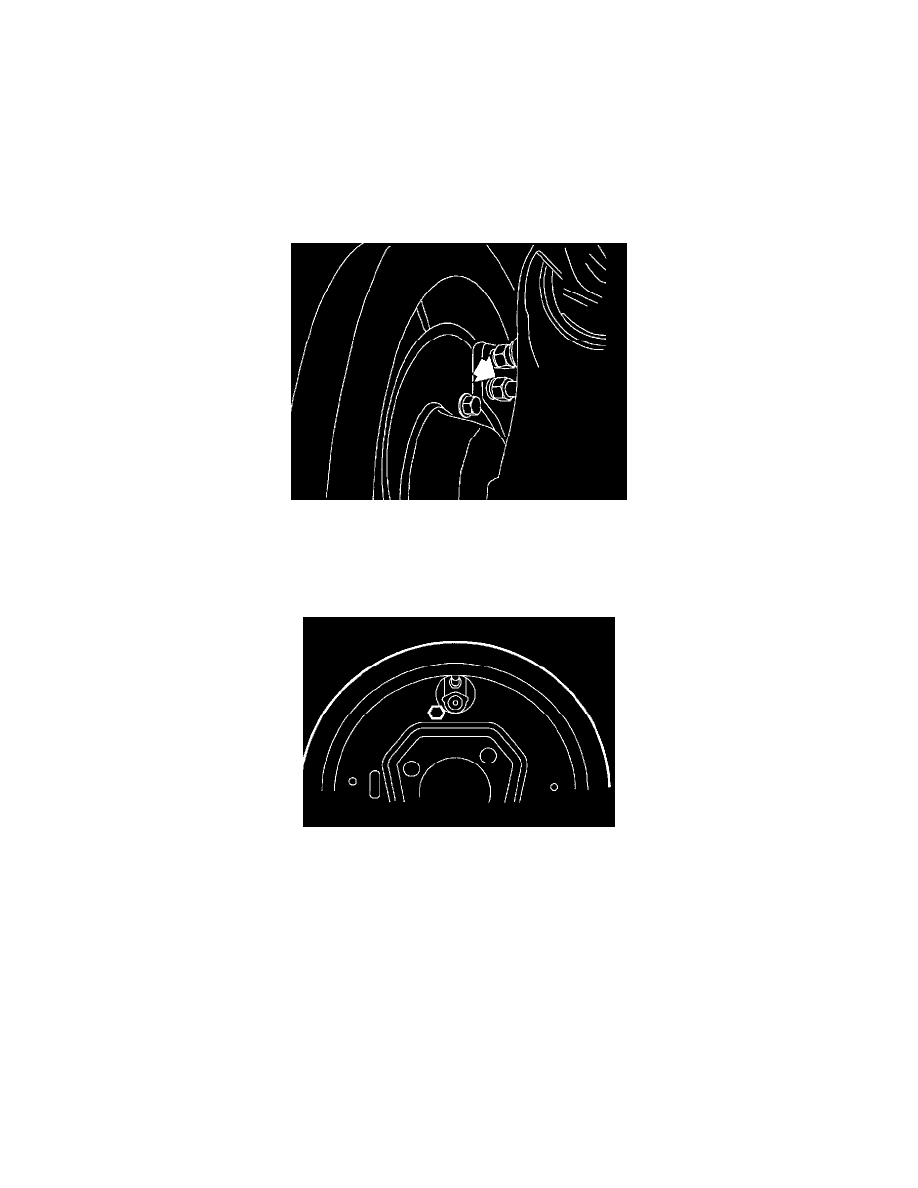L300 V6-3.0L VIN R (2001)

Wheel Cylinder: Service and Repair
WHEEL CYLINDER
REMOVAL
CAUTION: MAKE SURE VEHICLE IS PROPERLY SUPPORTED AND SQUARELY POSITIONED ON THE HOIST. TO HELP
AVOID PERSONAL INJURY WHEN A VEHICLE IS ON A HOIST, PROVIDE ADDITIONAL SUPPORT FOR THE VEHICLE ON THE
OPPOSITE END FROM WHICH COMPONENTS ARE BEING REMOVED.
1. Raise vehicle on hoist.
2. Remove rear wheel and tire assembly.
3. Disconnect brake pipe at rear wheel cylinder. Plug open brake pipes to prevent brake fluid loss and contamination.
4. Disassemble rear drum brake assembly.
5. Remove wheel cylinder fastener and remove wheel cylinder.
INSTALLATION
1. Install new wheel cylinder onto backing plate with fastener.
Torque: Wheel Cylinder-to-Backing Plate Bolt: 9 Nm (80 inch lbs.)
2. Connect brake pipe onto wheel cylinder.
Torque: Brake Pipe-to-Rear Wheel Cylinder: 16 Nm (12 ft. lbs.)
3. Completely assemble rear drum brake assembly.
NOTICE: Before installing wheels, remove rust or corrosion from wheel mounting surfaces and brake rotors. Failure to do so can cause wheel
bolts to loosen in service.
4. Position wheel and tire assembly onto hub.
5. Install wheel bolts and tighten in a star pattern.
5.1
Hand tighten all five wheel bolts.
5.2
Use a torque wrench to tighten wheel bolts using a star pattern.
Torque: Wheel Bolts (Initial Torque): 63 Nm (46 ft. lbs.)
5.3
Use a torque wrench to final tighten wheel bolts using a star pattern
Torque: Wheel Bolts (Final Torque): 125 Nm (92 ft. lbs.)
6. Lower vehicle from hoist.
7. Bleed brakes.
